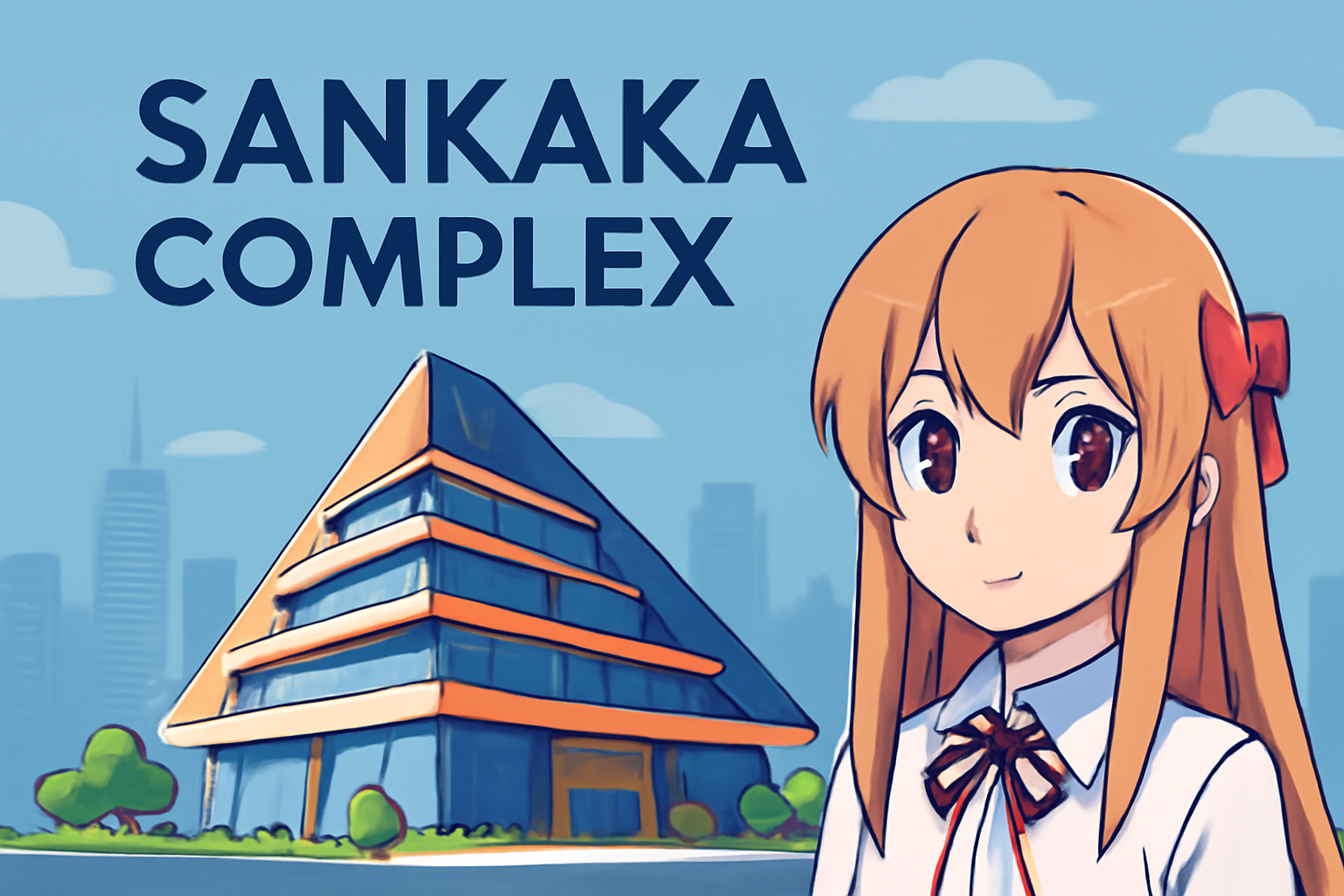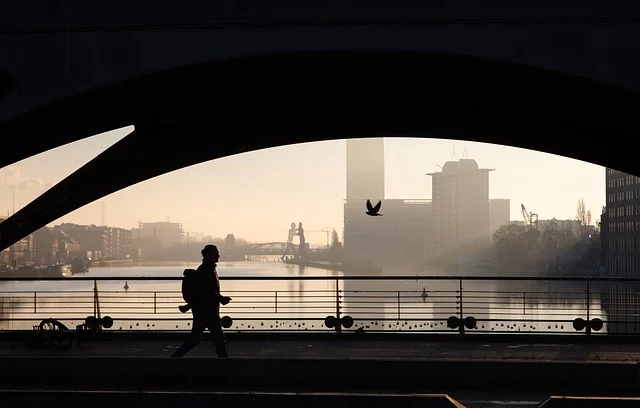
Sankaka Complex is a term that many are still unfamiliar with, but its growing relevance in architecture, urban planning, and even real estate cannot be denied. If you’re interested in understanding how this concept is reshaping the design landscape, this article will explore all facets of the Sankaka Complex, its key characteristics, and its impact on modern urban development.
In this guide, we’ll break down the meaning, origin, benefits, and real-world applications of Sankaka Complex, all while providing you with the latest updates for 2025. Whether you’re an architecture enthusiast, a student, or someone interested in modern buildings, this article will offer in-depth insights to help you grasp the concept of Sankaka Complex in a meaningful way.
What is the Sankaka Complex?
The Sankaka Complex is an innovative architectural design concept that has evolved from traditional building structures to accommodate the needs of modern cities. It incorporates advanced elements that prioritize sustainability, efficiency, and aesthetic appeal. At its core, the Sankaka Complex combines various elements of functionality, aesthetics, and environmental consciousness.

Key Features of the Sankaka Complex
A Sankaka Complex often consists of multi-use spaces designed to serve different purposes. These complexes can range from residential buildings to commercial hubs, creating a unique environment where residents and businesses coexist in harmony. A key characteristic of this complex is the integration of green technologies and eco-friendly design elements, making it an ideal solution for urban development in environmentally conscious cities.
The Rise of Sankaka Complex in Urban Development
In recent years, the need for sustainable and adaptable urban spaces has skyrocketed. The traditional design of standalone buildings no longer meets the needs of modern cities, which demand flexibility and eco-friendliness. As a result, the Sankaka Complex has gained attention for its versatility and forward-thinking design.
Sustainable Design in Sankaka Complex
One of the most impressive features of the Sankaka Complex is its focus on sustainable design. Buildings within this complex are constructed using materials that are both eco-friendly and energy-efficient. For example, solar panels, green roofs, and rainwater harvesting systems are common components of these complexes, helping reduce energy consumption and minimize the environmental footprint.
Adaptable to Urban Growth
As cities continue to expand and evolve, the Sankaka Complex has proven to be an adaptable solution. With the flexibility to support residential, commercial, and public spaces, these complexes can grow along with their communities. This adaptability ensures that the Sankaka Complex remains a relevant and viable option for urban developers as cities face increased pressure for space and resources.
How Sankaka Complex Enhances the Urban Landscape
The Sankaka Complex is more than just a building; it’s a revolutionary concept that can significantly enhance the urban landscape. These complexes offer multiple benefits, including increased green spaces, improved air quality, and better accessibility for pedestrians and cyclists.
Green Spaces and Environmental Impact
A hallmark of the Sankaka Complex is its emphasis on green spaces within urban areas. By incorporating parks, gardens, and communal outdoor areas, these complexes help reduce the concrete jungle effect often seen in crowded cities. The introduction of greenery not only improves aesthetics but also plays a vital role in enhancing the well-being of residents by offering a place for relaxation and community engagement.
Creating Walkable Cities
Another key benefit of the Sankaka Complex is its ability to create walkable cities. With pedestrian-friendly streets, bike lanes, and easy access to public transportation, these complexes promote healthier lifestyles while reducing the need for cars. As more cities embrace this design philosophy, we can expect to see a significant shift towards greener, more accessible urban environments.
The Future of Sankaka Complex: Innovations and Trends
Looking towards 2025 and beyond, the Sankaka Complex is set to evolve further, incorporating even more advanced technologies and innovative design trends.

Smart Technology Integration
In the future, the Sankaka Complex is likely to feature even more advanced smart technologies. With the integration of AI, IoT (Internet of Things), and automated systems, these complexes will become even more efficient and user-friendly. From automated waste management to energy-efficient climate control systems, smart technology will further enhance the functionality and sustainability of the Sankaka Complex.
Modular and Scalable Design
One of the most exciting trends in the evolution of the Sankaka Complex is modular design. Modular building techniques allow for greater scalability, enabling developers to add or remove components as needed. This flexibility will ensure that Sankaka Complexes can be tailored to meet the demands of changing urban populations and ever-evolving cityscapes.
More Read About: DM108basic: Ultimate Guide to Features, Uses, and Benefits
Traditional vs. Sankaka Complex Design
| Feature | Traditional Design | Sankaka Complex |
| Flexibility | Limited to predefined functions | Highly adaptable and multipurpose |
| Sustainability | Minimal focus on eco-friendliness | Strong emphasis on green technology |
| Urban Integration | Often isolated from other buildings | Designed to enhance urban landscapes |
| Smart Technology | Rarely integrated | Equipped with AI and IoT systems |
| Green Spaces | Limited | Abundant green spaces and parks |
Conclusion
The Sankaka Complex is not just a trend but a necessary evolution in urban design. As cities grow and face increasing pressures on space and resources, the Sankaka Complex offers a sustainable, adaptable solution that can transform how we live, work, and interact in urban environments. With its focus on green spaces, smart technology, and multifunctional design, the Sankaka Complex is set to play a key role in shaping the future of urban development for years to come.
By understanding the principles behind Sankaka Complexes, urban developers, architects, and city planners can create more sustainable, efficient, and livable spaces for future generations. As we move into 2025, it’s clear that this architectural innovation will continue to redefine the way we approach urban living.
FAQs on Sankaka Complex
1. What is the primary focus of a Sankaka Complex?
The primary focus of a Sankaka Complex is to create sustainable, adaptable, and multifunctional urban spaces. These complexes combine residential, commercial, and public areas, all while emphasizing eco-friendly design and green technology.
2. How does a Sankaka Complex benefit urban growth?
A Sankaka Complex benefits urban growth by offering scalable solutions that can be adapted to changing population demands. By incorporating green spaces and walkable areas, these complexes promote a healthier urban lifestyle while reducing the strain on natural resources.
3. Is the Sankaka Complex eco-friendly?
Yes, the Sankaka Complex is designed with sustainability in mind. It integrates green technologies like solar panels, rainwater harvesting, and energy-efficient systems to minimize its environmental impact.
4. Can Sankaka Complexes be used for residential purposes?
Absolutely. Sankaka Complexes are highly versatile and can serve as residential, commercial, and public spaces, making them ideal for mixed-use developments in modern cities.
5. What are the future trends for Sankaka Complexes?
In the future, Sankaka Complexes are expected to integrate more smart technologies, such as AI and IoT systems, to enhance functionality. Additionally, modular designs will allow these complexes to be easily expanded or reconfigured as needed.







